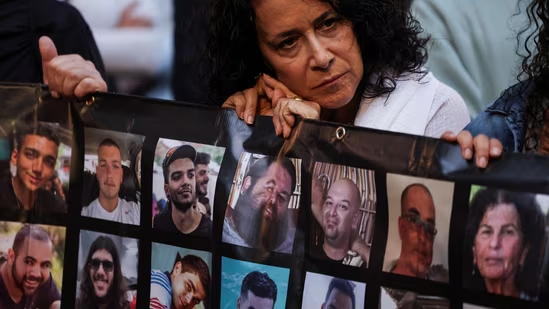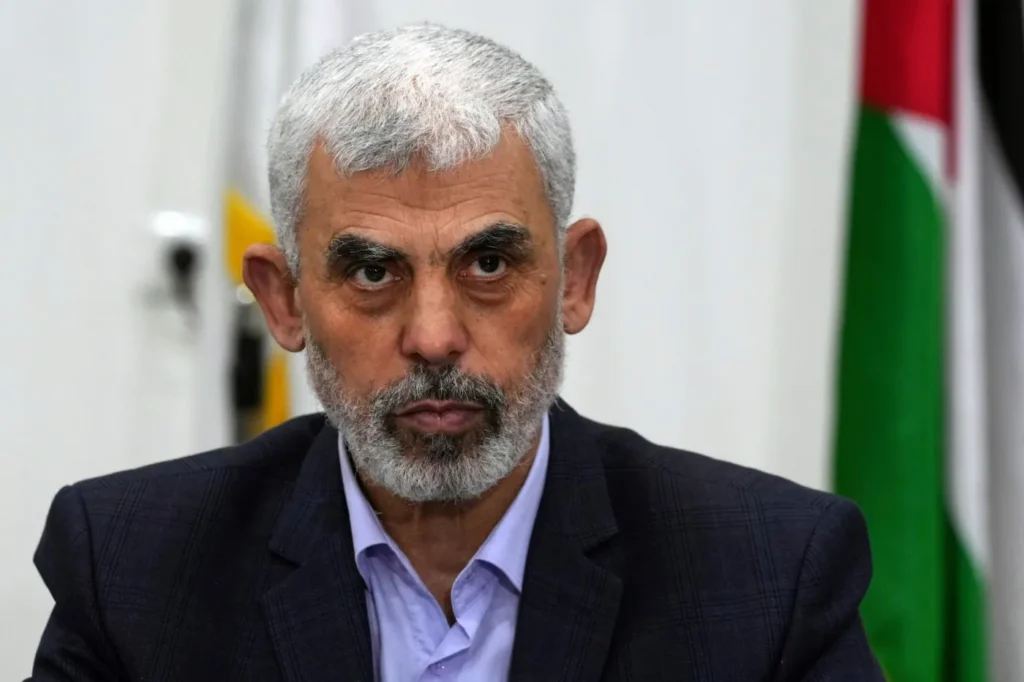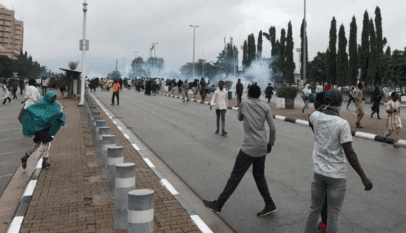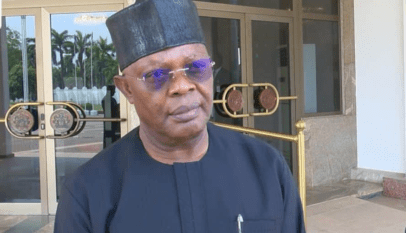
Amidst growing tension in the Middle East, Israel is marking the first anniversary of the Hamas attack.
On the morning of October 7, 2023, Hamas unexpectedly launched a massive and unprecedented attack on Israel, sparking a full-scale conflict. In addition to launching thousands of rockets, Hamas militants breached the Gaza-Israel border, attacking civilian communities and taking hostages.
Over 200 hostages, comprising women, children, the elderly, and soldiers, were taken from Israel into Gaza. There was a gruesome massacre of civilians at the Supernova music festival, where more hostages, including Israelis and foreign nationals, were taken, beaten, raped, and tortured.
The incident marked a turning point in the Israel-Palestinian conflict – a long-standing and deeply complex territorial and political dispute between Jewish Israelis and Palestinian Arabs. The roots of the conflict go back over a century.
October 7 in Figures
Death Toll: Israeli 1,200 Palestine 30,000
Displaced Israelis 500,000 Palestinians 1.3million
October–November 2023: Early Negotiations and International Efforts
Immediately following the attack, Hamas signalled that they were willing to negotiate the release of the hostages in exchange for the freedom of thousands of Palestinian prisoners held by Israel. At the time, Israel had around 5,200 Palestinian prisoners, including 170 minors.

Yahya Sinwar: Hamas’ leader and mastermind of the October 7 attacks
Countries like Qatar intervened to mediate the situation, attempting to broker a deal. In late November 2023, after several rounds of discussions, Hamas and Israel agreed to a ceasefire and a limited prisoner exchange. This deal resulted in Hamas releasing approximately 50 hostages, mostly women and children, in exchange for Israel releasing 150 Palestinian prisoners.
November 2023 – February 2024: Hostage Releases and Military Operations
By the end of November 2023, a total of 105 hostages had been released, including civilians from multiple countries such as Israel, Thailand, and the Philippines. Military operations by the Israeli Defense Forces (IDF) continued, and eight hostages were rescued in high-risk operations.
Despite these efforts, the situation remained dire. Hamas continued to hold over 100 hostages, some of whom were civilians, while others were Israeli soldiers. Negotiations for further exchanges stalled as Hamas leadership, particularly Yahya Sinwar, began to adopt a more aggressive stance, rejecting further hostage deals in favor of continuing the conflict.
August–October 2024: Stalemate and Intensifying Military Operations
As of September 2024, 101 hostages are still held by Hamas in Gaza, with 97 of them being individuals kidnapped during the October 7, 2023, attack. Over time, 37 hostages were confirmed dead, some killed in captivity, while others died during rescue attempts. Hamas hinted at a more ruthless approach to hostages, stating that they would kill any captive if the IDF attempted a rescue.
Negotiations for the release of these hostages have become increasingly difficult, with Sinwar hardening his stance against any further compromises. The release of hostages remains a top priority for Israel, but military operations in Gaza are intensifying, leading to a more dangerous situation for those still in captivity.
Current Situation
The Middle East is bracing for full-blown and expanded war, with many Arab and world leaders fearing deadly reprisal attacks by Israel on Iran, for the October 1 2024, missile attacks. No significant breakthroughs have been made in the hostage negotiations. The humanitarian situation in Gaza is deteriorating, and while international mediators continue to press for solutions, the likelihood of peace is uncertain.
The hostage crisis, which began as a key element of Hamas’ attack on October 7, 2023, remains unresolved a year later. Despite several high-profile prisoner exchanges and military rescues, over 100 hostages are still in Gaza, with negotiations growing increasingly complex. The situation underscores the broader Israel-Hamas conflict, where diplomatic efforts remain overshadowed by ongoing military operations and regional tensions.
Iran’s Influence
Iran, a key supporter of both Hezbollah and Hamas, plays a pivotal role in the ongoing conflict. By encouraging Hezbollah to exert pressure on Israel, Iran adds to the challenges faced by Israeli defense forces. This highlights that the conflict extends beyond local issues, reflecting the broader power struggle between Israel and Iran in the region.
Broader Middle East Conflicts
The October 7 attack on Israel has escalated into a wider regional conflict, particularly with Hezbollah’s involvement from Lebanon. This Lebanese militant group and political party has significantly impacted the situation following the Hamas attack on Israel. Here are the key points of Hezbollah’s involvement:
- Ally and Military Supporter of Hamas Despite their sectarian differences, Hezbollah (Shiite) and Hamas (Sunni) share a common goal of opposing Israel, with both groups receiving support from Iran. Following the Hamas attack, Hezbollah increased its activities along the Israeli-Lebanese border, launching rockets and conducting raids to open a northern front against Israel, thereby easing the pressure on Hamas in Gaza.
- Regional Proxy Conflict Hezbollah’s actions are part of a broader regional proxy war, heavily influenced by Iran. As a powerful backer, Iran uses Hezbollah to apply pressure on Israel. This involvement signals that any conflict involving Hamas could potentially spread beyond Gaza, drawing in Lebanon and other neighboring regions.
- Opening a Second Front Hezbollah’s activities have created a second front, complicating Israel’s military strategy. With significant military capabilities, including advanced missiles and drones, Hezbollah has engaged in skirmishes with Israeli forces in northern Israel. In response, Israel has conducted airstrikes on Hezbollah positions in Lebanon. This escalation forces Israel to defend its northern borders while also combating Hamas in the south.
- Psychological and Strategic Pressure By attacking from multiple directions, Hezbollah aims to stretch Israel’s military resources and create a psychological impact. This multi-front conflict diverts Israeli attention from Gaza and adds strain on its defense forces, which must remain vigilant to threats on both fronts.
Israel Strikes Back – Assassination of Political Figures
The recent assassinations of Hezbollah leaders by Israel, including prominent figures like Hassan Nasrallah, have significantly escalated tensions in the Middle East. This development has further destabilized a region already grappling with conflicts in Gaza and Syria.
These targeted killings have intensified hostilities between Hezbollah and Israel, leading to cross-border attacks and raising fears of a broader regional conflict. Supported by Iran, Hezbollah has launched thousands of rockets into northern Israel, prompting retaliatory strikes from Israel on Hezbollah positions in Lebanon.
The loss of senior Hezbollah leaders has infuriated Iran and Hezbollah supporters, with Iranian officials condemning the assassinations. In response, Iran launched approximately 200 missile attacks on Israel on October 1, causing significant damage to civilian and military infrastructure.
Iran’s involvement complicates the situation, as it provides military support to Hezbollah but seems reluctant to engage directly in a larger conflict with Israel. Iran has warned Israel of more severe attacks on its facilities if provoked further.
Meanwhile, Israel faces increased pressure from the US, its closest ally, regarding its planned attack on Iran. President Joe Biden has expressed concerns, stating he cannot guarantee that Israel will refrain from targeting Iran’s oil facilities and nuclear sites.
































